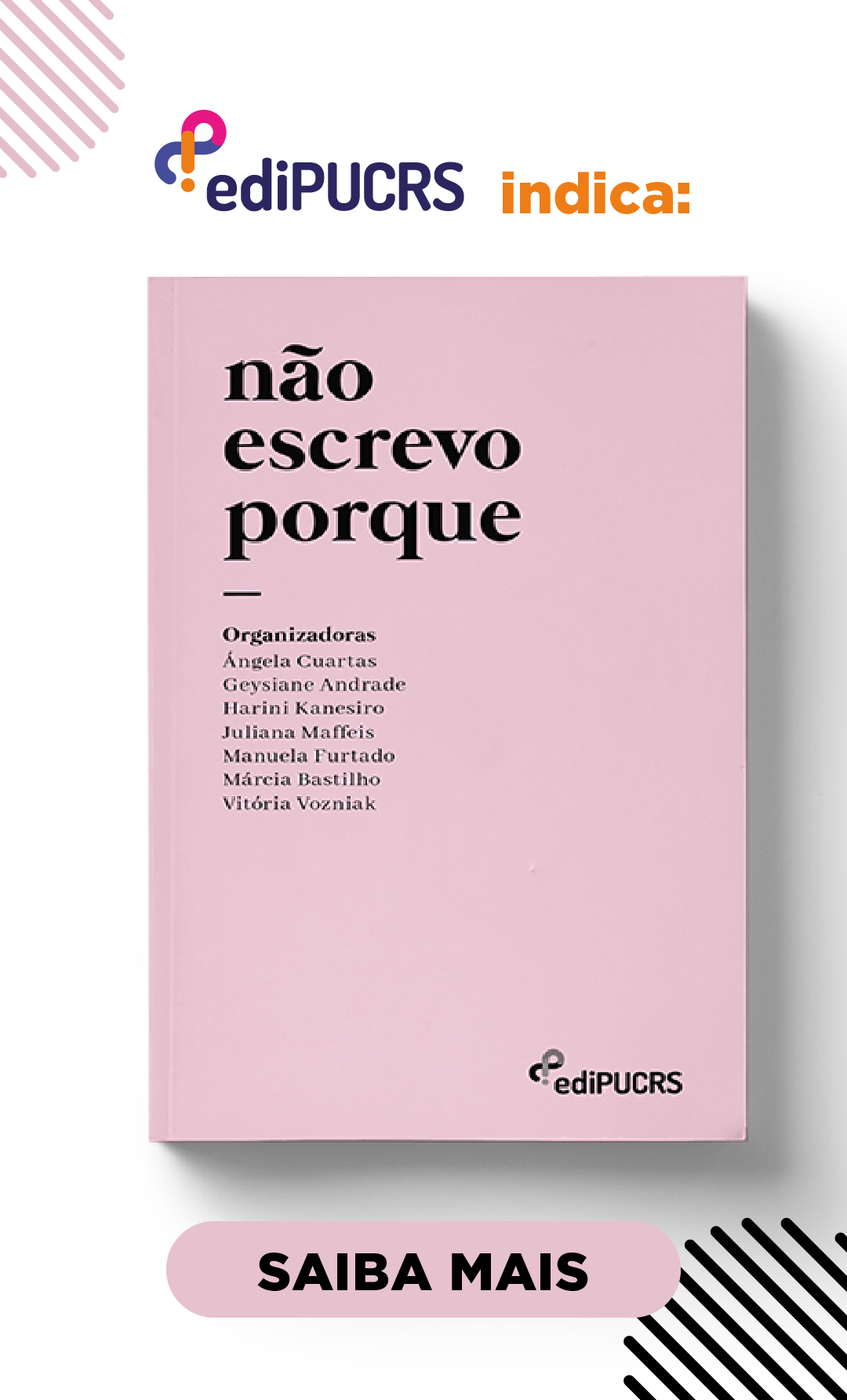Semantic holograms: a metatheoretical proposal toward the evaluation of complex meaning within natural language
DOI:
https://doi.org/10.15448/1984-4301.2019.2.32481Keywords:
Modality. Semantic holography. Metatheory of Interfaces. Logic and natural language.Abstract
This paper proposes to evaluate the dimensions of causality as a phenomenon below and beyond the semantic instance, identifiable by means of the approximation between sentence meaning and speaker meaning, which is expressed through the relation between cause/effect feasible by modality. It is assumed that the causal phenomenon, representing both its relevance to human cognition and wider scopes of grammar, falls within the category of complex meaning, requiring the aid of the syntactic and pragmatic disciplines for the semiformal study of its nature and occurrence in the logical-linguistic sphere. Thus, this article is organized according to the following structure: a) the causal phenomenon and its expression within natural language via modality regarding its respective implications for i) everyday communication, ii) scientific language and iii) the ontology of Mind’s, Logic’s, Language’s, Linguistics’ and Science’s Philosophy; b) the constitution of semantic holography by means of a metatheoretical proposal sustained by an interface between logic and natural language; and c) the analysis of complex meaning of causality via modality on the interface between i) syntax and semantics and ii) semantics and pragmatics as symmetrical holograms.Downloads
References
AUSTIN, J. L. How to do things with words? Cambridge: Harvard Univ., 1962.
BACH, E. Natural language metaphysics. Studies in Logic and the Foundations of Mathematics, [S. l.], v. 114, p. 573-595, 1986. https://doi.org/10.1016/S0049-237X(09)70714-1.
BACH, E. Informal lectures on formal semantics. Albany: State University of New York, 1989.
BAR-HILLEL, Y. Indexical expressions. Mind, Oxford, v. 63, n. 251, p. 359-379, 1954. https://doi.org/10.1093/mind/LXIII.251.359
CARNAP, R. Foundations of Logic and Mathematics. In: NEURATH, O.; CARNAP, R.; MORRIS, C. W. (ed.). International Encyclopedia of Unified Science. Chicago: University of Chicago Press, 1938. p. 139-214.
CHIERCHIA, G. Plurality of Mass Nouns and the Notion of “Semantic Parameter”. In: ROTHSTEIN, S. (ed.). Events and Grammar: Studies in Linguistics and Philosophy, v. 70. Dordrecht: Springer, 1998. p. 53-103. ISBN: 978-1-4020-0289-2. https://doi.org/10.1007/978-94-011-3969-4_4
CHIERCHIA, G.; McCONNEL-GINET, S. Meaning and grammar: an introduction to semantics. 2. ed. Cambridge: MIT Press, 2000.
CHOMSKY, N. The minimalist program. Cambridge, Mass.: MIT Press, 1995.
CINQUE, G. Adverbs and Functional Heads: a crosslinguistic perspective. New York: Oxford University Press, 1999.
CINQUE, G. Restructuring and functional heads: the cartography of syntactic structures. New York: Oxford University Press, 2006.
COMRIE, B. Language universals and linguistic typology. Basil Blackwell: Oxford, 1981.
COSTA, J. C. Os Enigmas do Nome - Na interface Lógica/Semântica/Pragmática. Porto Alegre: EDIPUCRS, 2004a [1988].
COSTA, J.C. Metateoria linguística (considerações ao nível de filosofia da ciência). Revista da ADPUCRS, Porto Alegre, n. 5, p. 25-32, 2004b.
COSTA, J. C. The sciences of language: communication, cognition and computation. In: AUDY, J; MOROSINI, M. Innovation and interdisciplinarity in the university. Porto Alegre: EDIPUCRS, 2007. p. 345-376.
COSTA, J. C. Lógica e linguagem natural nas interfaces. In: PEREIRA, A. F.; COSTA, J. C. (ed.). Linguagem e cognição: relações interdisciplinares. Porto Alegre: EDIPUCRS, 2009. p. 132-142.
COSTA, J. C. Na interface entre lógica formal e lógica prática: inferências múltiplas. Letras de Hoje, Porto Alegre, v. 51, n. 3, p. 411-418, 2016. Disponível em: http://dx.doi.org/10,15448/1984-7726.2016.3.25482. Acesso em: 1 jan. 2018.
De PIERRIS, G.; FRIEDMAN, M. Kant and Hume on Causality. In: ZALTA, E. N. (ed.). The Stanford Encyclopedia of Philosophy (Winter 2018 Edition). Disponível em: https://plato.stanford.edu/archives/win2018/entries/kant-hume-causality/. Acesso em: 1 mar. 2019.
GIERE, R. Scientific perspectivism. Chicago: University of Chicago Press, 2006. https://doi.org/10.7208/chicago/9780226292144.001.0001
GRICE, H.P. Meaning. Philosophical review, Ithaca, v. 66, p. 377–88, 1957. https://doi.org/10.2307/2182440
GRICE, H. P. Logic and conversation. Cambridge: Harvard University, 1967. (William James lectures).
HEIM, I.; KRATZER, A. Semantics in generative grammar. New Jersey: Wiley-Blackwell, 1998.
HORNSTEIN, N. Logic as grammar. Cambridge: The MIT Press, 1984.
JACKENDOFF, R.S. Language of the mind: essays on mental representation. Cambridge: MIT Press, 1992. https://doi.org/10.7551/mitpress/4129.001.0001
KRATZER, A. The notional category of modality. Worlds, Words, and Contexts. (Eds.). Eikmeyer, H.-J. and H Rieser. Berlín: de Gruyter, 1981. p. 38-74.
KRATZER, A. Modality. von STECHOW, A; D. WUNDERLICH, D. (eds.). Semantics: An International Handbook of Contemporary Research. [Oxford]: [Oxford University Press], 1991. p. 639-650.
KRATZER, A. Constraining premise sets for counterfactuals. Journal of Semantics, [S. l.], v. 22, n. 2, p. 153-158, 2005. Acesso em: 1 jan. 2018. https://doi.org/10.1093/jos/ffh020
KRATZER, A. Modality for the 21st Century. Proceedings… In: INTERNATIONAL CONGRESS OF LINGUISTS, 19., Geneva, 2013. p. 181-201.
KRATZER, A. Evidential Moods and the Semantics of Attitude and Speech Reports. Talk given at the University of Pennsylvania (May 5, 2016). In: SYNCART WORKSHOP, 1., Siena, July 13, 2016, and the University of Connecticut (September 9, 2016), 2016.
KRIPKE, S. Naming and necessity. Oxford: Basil Blackwell, 1980.
LEWIS, D. Causation. The Journal of Philosophy, New York, v. 70, n. 17, p. 556-567, 1973. https://doi.org/10.2307/2025310
LUDLOW, P. Semantics, tense, and time: an essay in the metaphysics of natural language. Cambridge: MIT Press, 1999. https://doi.org/10.7551/mitpress/6170.001.0001
MONTAGUE, R. Formal philosophy: selected papers. In: THOMASON, R. H. (ed.). New Haven: Yale University Press, 1974.
MORRIS, C. Foundations of the theory of signs. In: NEURATH, O.; CARNAP, R.; MORRIS, C. (ed.). International encyclopaedia of Unified Science, v. 1, n. 2. Chicago: University of Chicago Press, 1938. p. 77-136.
MORRIS, W. E.; BROWN, C. R., David Hume. In: ZALTA, E.N. (ed.). The Stanford Encyclopedia of Philosophy (Spring 2017 Edition). Disponível em: https://plato.stanford.edu/archives/spr2017/entries/hume/. Acesso em: 29 jun. 2018.
PEARL, J. Causality: models, reasoning, and inference. Cambridge: Cambridge University Press, 2000.
PEIRCE, C. S. Collected papers. Harvard University Press: Cambridge, USA, 1931-1958.
SAUSSURE, F. Curso de linguística geral. 28. ed. São Paulo: Editora Cultrix, 2012 [1916].
SEARLE, J. R. Speech acts: an essay in the philosophy of language. London: Cambridge Univ., 1969. https://doi.org/10.1017/CBO9781139173438
STALNAKER, R. On the representation of context. Journal of logic,
language and information, Dordrecht, v. 7, n. 1, p. 3-19, 1998. https://doi.org/10.1023/A:1008254815298
STALNAKER, R. Context and content. Oxford: Oxford University press, 1999. https://doi.org/10.1093/0198237073.001.0001
STRAWSON, P. F. Introduction to Logical Theory. London: Methuen, 1952.
WITTGENSTEIN, L. Philosophical Investigations. Oxford: Blackwell, 1958.
Downloads
Published
How to Cite
Issue
Section
License





